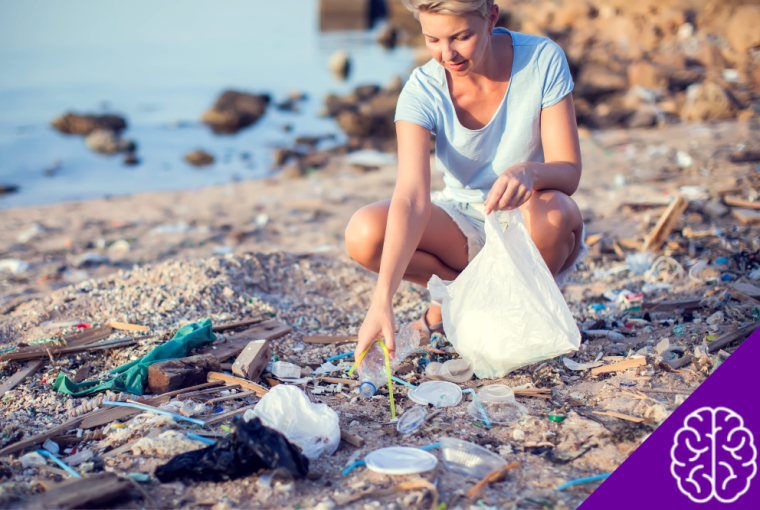The movement to replace plastic straws with sustainable alternatives has gained momentum in recent years. Cafés, restaurants, and even global chains have swapped plastic for paper, bamboo, or metal in an effort to reduce environmental impact.
But are these alternatives as eco-friendly as they seem? Recent research suggests that the issue is far more complex than just choosing a biodegradable option.
This guide explores everything you need to know about sustainable straws, from their benefits to their hidden environmental costs, helping you make informed choices for a greener future.
Why Are We Moving Away From Plastic Straws?
Plastic straws have become a symbol of single-use plastic waste. While they only account for about 3.7% of global plastic pollution in oceans, their visibility has made them a target for awareness campaigns.
Their lightweight design makes them prone to littering, and when they reach marine environments, they cause harm to sea life. For example, sea turtles and other animals can ingest them, leading to life-threatening conditions.
Governments, businesses, and consumers have responded with a push for alternative straw options to combat this issue. However, not all replacements are created equal.
The Hidden Truth About “Sustainable” Straws
Recent studies, including one by the University of Antwerp, uncovered an alarming issue with some “eco-friendly” straws.
Paper straws, widely believed to be an environmentally safer option, were found to contain per- and polyfluoroalkyl substances (PFAS). These chemicals, often referred to as “forever chemicals,” persist in the environment for decades and can accumulate in soil, water, and even the human body.
PFAS exposure is linked to serious health problems, including liver damage, hormonal disruptions, and an elevated risk of some cancers. Their presence in supposedly sustainable materials raises an essential question about how alternatives are evaluated.
The Pros and Cons of Different Straw Materials
Choosing the right straw depends on a variety of factors. Here’s a breakdown of the most common options and their environmental impact:
1. Plastic Straws
Pros: Cheap to produce, widely available, functional for all beverages.
Cons: Persistent in the environment, difficult to recycle, harmful to wildlife.
2. Paper Straws
Pros: Biodegradable, lightweight.
Cons: Often treated with chemicals like PFAS, less durable, prone to becoming soggy during use.
3. Metal Straws
Pros: Durable, reusable, easy to clean, and long-lasting.
Cons: High carbon emissions during production, energy-intensive manufacturing.
4. Glass Straws
Pros: Aesthetic appeal, reusable, easy to clean, free from harmful chemicals.
Cons: Fragile, high energy use during production.
5. Bamboo Straws
Pros: Biodegradable, made from renewable resources.
Cons: Limited durability, requires more care for repeated use.
6. Edible Straws (e.g., Pasta or Algae-Based)
Pros: Zero waste, fun for consumers, especially kids.
Cons: Limited functionality (melts or softens in liquids), still under market testing.
Are Straws the Real Problem?
While straws have become the face of campaigns against single-use plastics, they are far from the main culprit. Fishing gear, water bottles, and other single-use items contribute a more significant share to the global plastic waste crisis.
However, banning plastic straws has had a positive educational impact, encouraging consumers to rethink their overall plastic consumption. If we are to make meaningful progress, tackling single-use plastics across industries, not just straws, must be part of the solution.
Regulations and Global Efforts to Ban Plastic Straws
The movement to ban plastic straws has inspired legislative action worldwide. For instance:
- United States: Many states, like California, now prohibit restaurants from providing plastic straws unless requested.
- Brazil: Eight states, including Rio de Janeiro, have outlawed plastic straws in commercial settings.
- Global Corporations: Brands like Starbucks and McDonald’s have introduced paper straws or redesigned lids to remove the need for straws altogether.
- United Nations: The UN is developing a Global Plastics Treaty to curb single-use plastics on an international scale, with final agreements expected soon.
These regulations reflect an increasing commitment by both governments and corporations to combat plastic pollution at a systemic level.
What You Can Do as a Consumer
Navigating the world of sustainable straws can feel overwhelming, but here are some simple steps you can take to make more informed choices:
- Skip the Straw: Whenever possible, drink directly from the cup or opt for lids designed to eliminate straws.
- Choose Reusable: Invest in durable options like metal or glass straws and carry them with you.
- Be Wary of Greenwashing: Products labeled “eco-friendly” aren’t always as sustainable as advertised. Look into the materials, chemicals, and production processes before buying.
- Reduce Overall Plastic Use: Consider other ways to cut down on single-use plastics in your daily life, like reusable bags and water bottles.
A Better Future Beyond Straws!
The conversation around sustainable straws is part of a larger challenge: reducing humanity’s reliance on single-use plastics. Innovations in biodegradable materials and governmental bans are steps in the right direction, but they need to be complemented by consumer awareness and responsible choices.
Ultimately, creating a sustainable future requires more than just switching straws. It’s about adopting habits that minimize waste altogether.
Support companies and initiatives genuinely committed to eco-friendly practices, and always prioritize reducing consumption over simply replacing materials. By making small but impactful choices, together, we can reduce pollution and protect our planet for generations to come!


